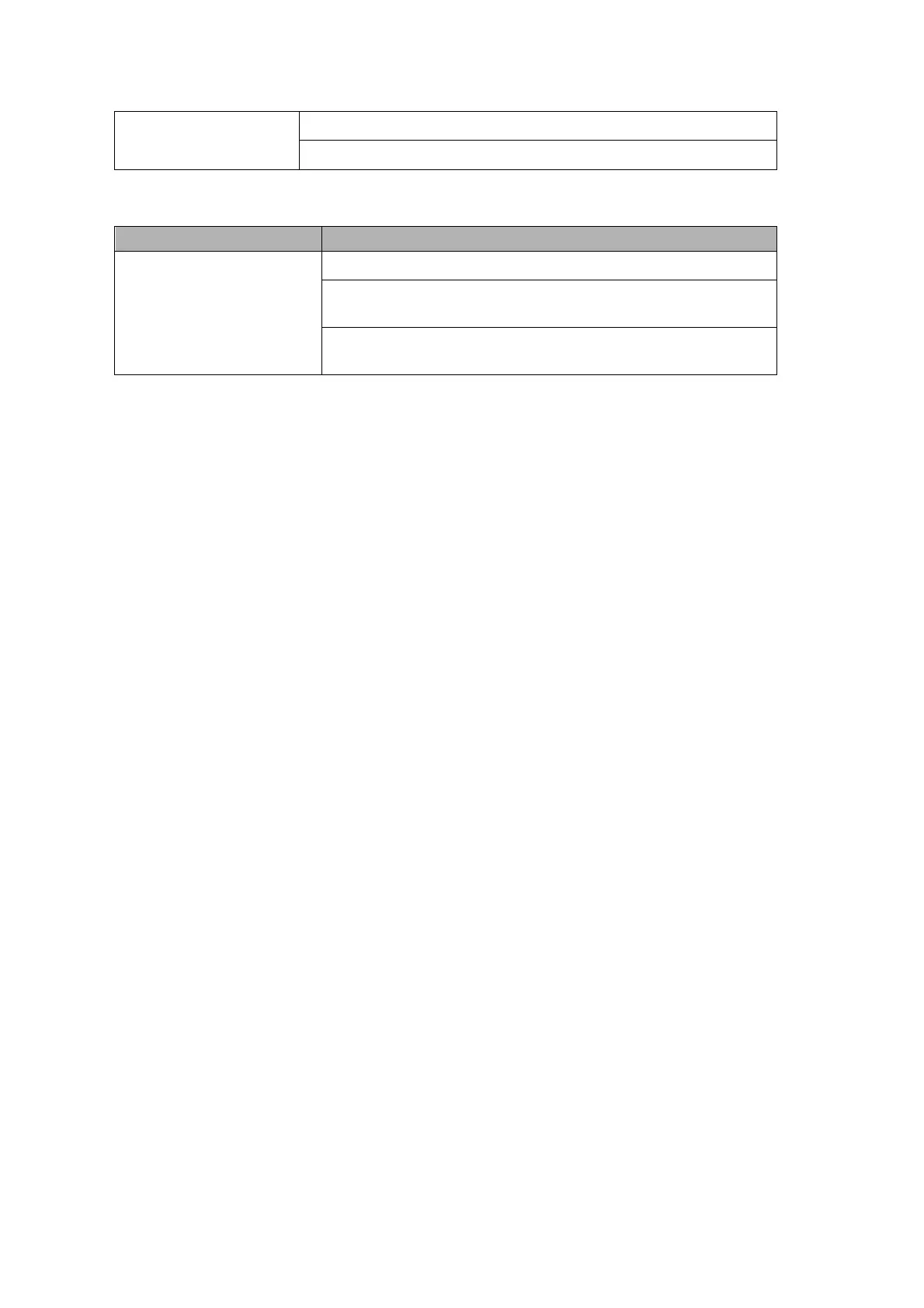B-2 Electrical Safety Inspection
No residue of fluid spillage (e.g., water, coffee, chemicals, etc.).
No loose or missing parts (e.g., knobs, dials, terminals, etc.).
B.2.2 Contextual Inspection
Test Item Acceptance Criteria
The enclosure and
accessories
No unusual noises (e.g., a rattle inside the case).
No unusual smells (e.g., burning or smoky smells,
particularly from ventilation holes).
No taped notes that may suggest device deficiencies or
operator concerns.
B.3 Device Labeling
Check the labels provided by the manufacturer or the healthcare facility are present and
legible.
Main unit label
Integrated warning labels
B.4 Protective Earth Resistance
a. Plug the probes of the analyzer into the device’s protective earth terminal and protective
earth terminal of the AC power cord.
b. Test the earth resistance with a current of 25 A.
c. Verify the resistance is less than limits.
LIMITS
ALL COUNTRIES R = 0.2 Ω Maximum
B.5 Earth Leakage Test
Run an Earth Leakage test on the device being tested before performing any other leakage
tests.
The following outlet conditions apply when performing the Earth Leakage test:
normal polarity( Normal Condition),
reverse polarity( Normal Condition),
normal polarity with open neutral(Single Fault Condition),
reverse polarity with open neutral(Single Fault Condition)
LIMITS
For UL60601-1,
300 μA in Normal Condition
1000 μA in Single Fault Condition

